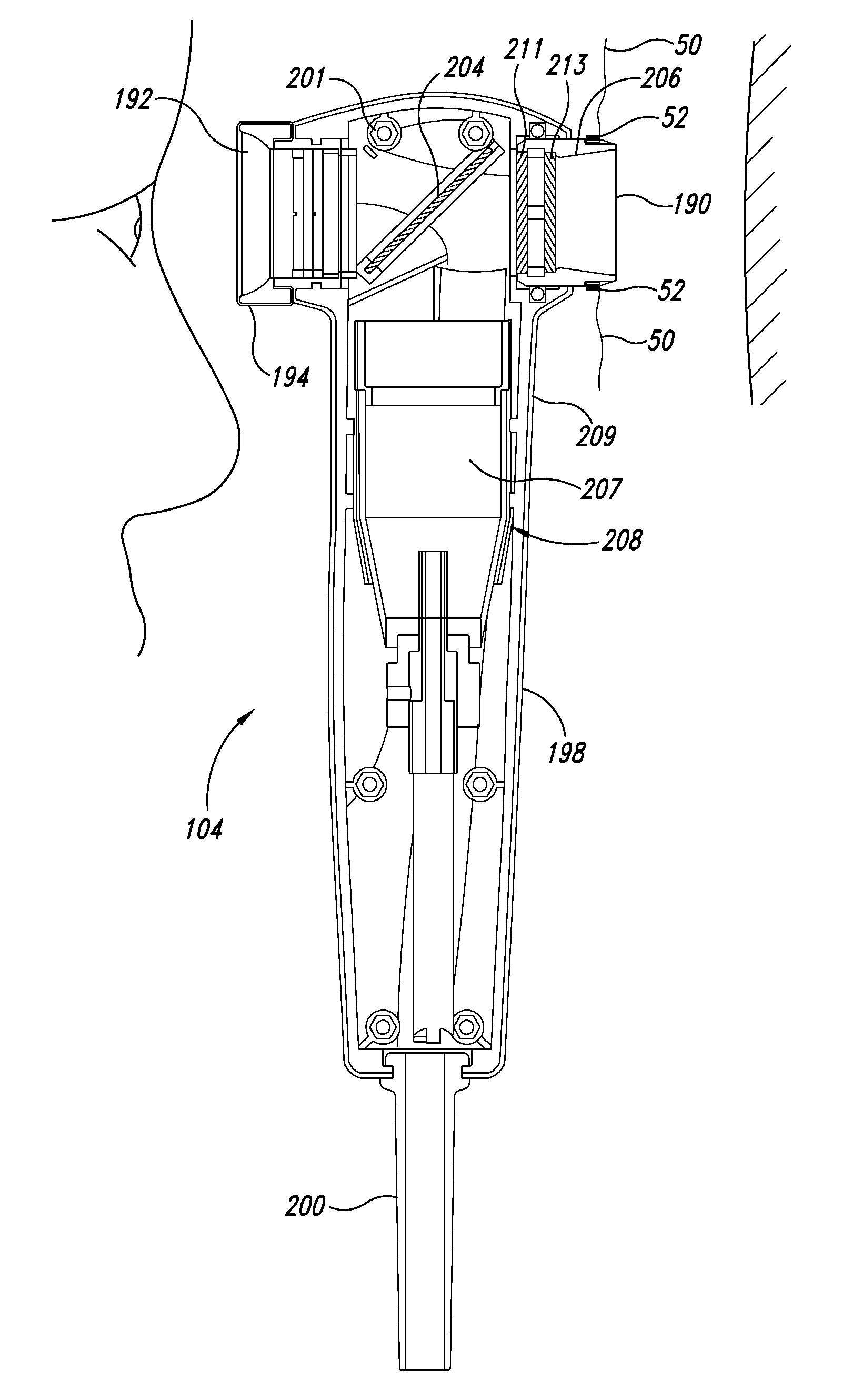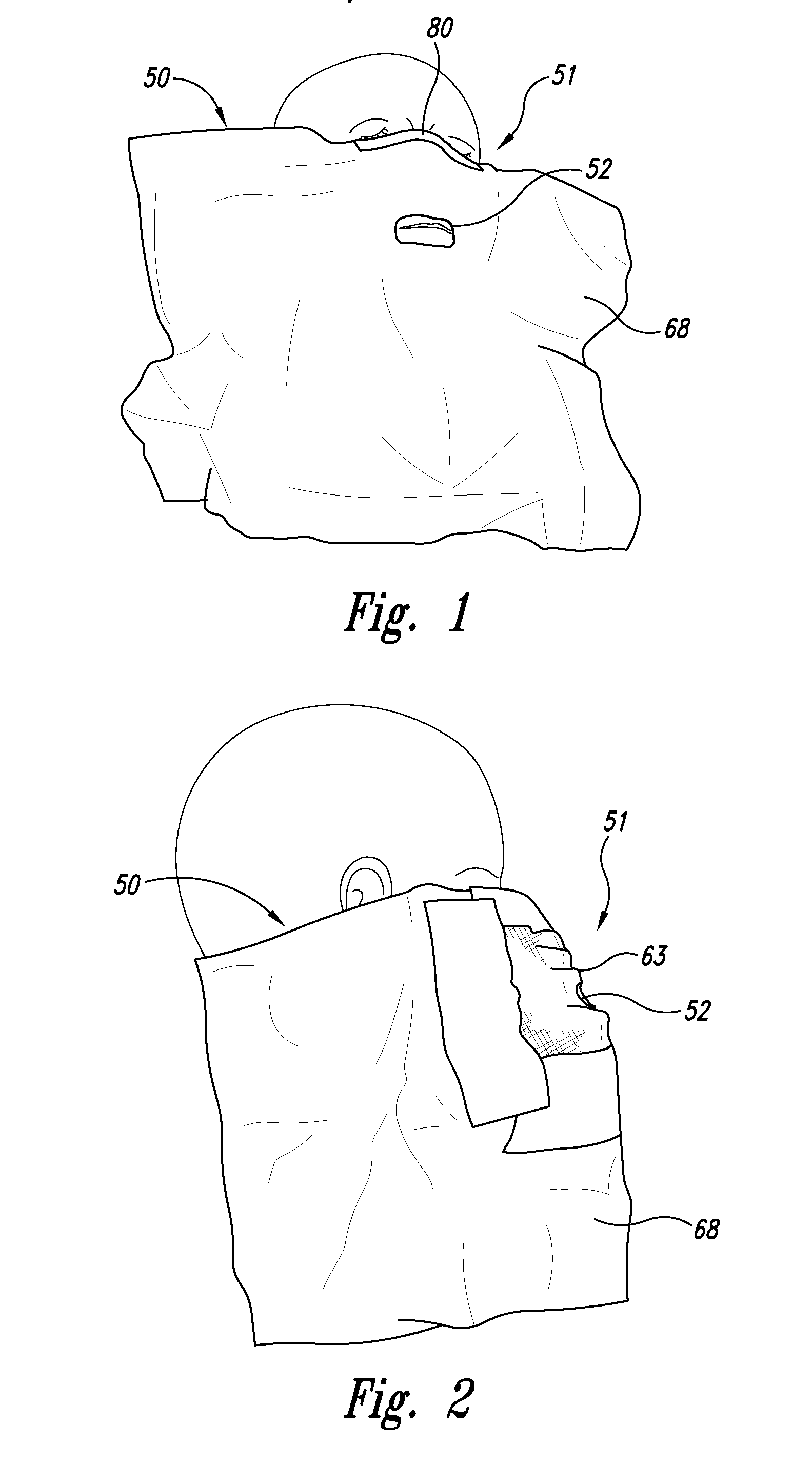Exemplary procedures include the following:1. The patient sits upright in a chair during the procedure. He / she will typically not be in a
supine position, although such can be used if desired. The
supine position causes the patient's tongue to fall back into the
throat restricting tissue
exposure.2. The
light source, scope, etc., preferably moves freely without the vestibular device either substantially constraining the movement or occluding the view of the dentist or other practitioner.3. The practitioner may, if desired, be able to grab and move the tongue without introducing
stray light and without disrupting the procedure.
Exemplary device constructions include the following:4. The
vestibule device can be composed of a draping material or other suitable shroud material, which can rigid or floppy or in-between as desired and depending on the given embodiment, non-rigid devices such as internal stiffeners can be included for shape. Systems and methods of attachment to the viewing scope, to a separate
light source (if any), and to a tool (if any). Systems and methods of attachment to the patient can also be included.a. Attachment of the
vestibule device to the scope: The scope or other investigative device enters the vestibular device to become, in some embodiments, a part of the ALMS, through a port or hole in the drape, typically in-line with the mouth or other
target tissue. An attachment and / or seal enhances
darkness and confident manipulation of the vestibular device and other elements of the systems without introduction of unwanted light.b. Attachment of the
vestibule device to the patient. A malleable / shapeable piece of material that conforms to the curves of the
nose and cheeks can be provided, such as an elastic that goes around the patients head or ear clips similar to frames of glasses. Attachment to the patient's head can allow the dentist to have more freedom to move the device to different angles. Molding around the
nose and cheeks acts as a seal that improves the reduction of ambient light.5. In some embodiments the vestibular device is disposable to inhibit the spread of
bacteria, viruses or material between patients.6. Particularly in embodiments where the vestibular device may be disposable, it should be inexpensive.
Exemplary dimensions for the vestibular device include the following:16. The vestibular devices are preferably not an encumbrance to the patient and the practitioner; e.g., does not interfere with movement during the procedure.17. The vestibular device is typically large enough that it will drape over the patient's mouth, and possibly body, and block out light that could enter at various points such as at the shoulders (in embodiments where the shoulders are of concern). The vestibular device, which can be disposable in whole or in part, is large enough to prevent light from entering when the device is moved during the procedure.18. The vestibular device will, in some embodiments, be attached to the patient and thereby in certain embodiments should not have significant perceptible or uncomfortable weight, for example less than 100 g.
Exemplary
interfacing for the vestibular device include the following:19. The vestibular device can couple / integrate with the investigative device such that it does not fall away from the investigative device unintentionally.20. The vestibular device can comprise a port or other access point of allowing the investigating device to access the patient's mouth or other body part under investigation.21. The vestibular device can interface to the patient by being formed to make a seal with his / her face or other body part. In one embodiment this is accomplished via a malleable / shapeable piece of material in the
mask.22. The draping material may be large enough and flexible enough that the health practitioner can grab and manipulate the tongue or other body from beneath the draping material without introducing ambient light.23. Space is typically created between the patient and the
light source. To do this, for example, the draping material can be relatively stiff, reinforced with another material, more of the same material and / or stitching or will have a brim or other space-making structure.
 Login to View More
Login to View More  Login to View More
Login to View More 


